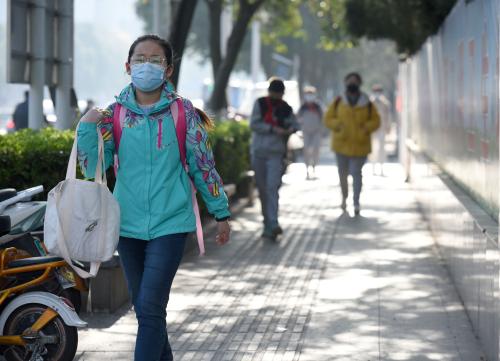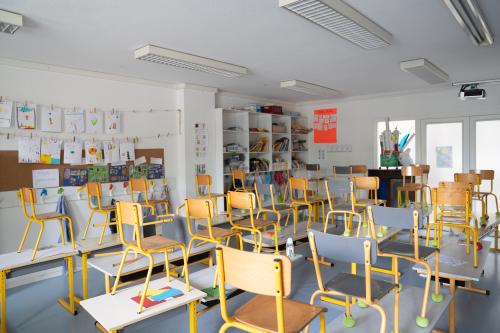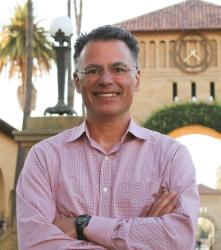Much of the world’s population was desperate and disoriented during the first half of the 20th century. A pandemic, economic depression, world wars, and colonial repression left people yearning for a new order and moral compass.
As World War II drew to a close, a group of foresighted leaders argued that lasting peace and prosperity would only come through a collective dedication to human rights and welfare. The Universal Declaration of Human Rights became the vehicle to express the vision of a new, more humane world, and the United Nations became its institutional home.
The declaration has 30 concise articles covering civil, social, political, and economic rights. Article 26 is revolutionary: “Everyone has the right to education. Education shall be free, at least in the elementary and fundamental stages. Elementary education shall be compulsory. Technical and professional education shall be made generally available and higher education shall be equally accessible to all on the basis of merit.”
These are simple words with profound meaning. It is hard to imagine now, but until then, few governments really believed that education should be free and available to everyone; that states—including colonial regimes—had the obligation to provide education to everyone in their jurisdiction; or that higher education should be based on merit.
The principles in the declaration served us well. The world is more prosperous, healthier, and better educated than ever. Ours is a world few people could have imagined in 1945. Our World in Data shows that 64 percent of people lived in extreme poverty in 1950 compared to 10 percent in 2015. Life expectancy increased from 46 years to 72 years, and the percentage of people who completed basic education increased from 49 percent to 86 percent. Advances in science and technology have transformed communication, food security, and health care.
Of course, the job is not finished. The declaration embedded a concept of “progressive realization” because its authors recognized that progress would depend on a nation’s institutions and resources. Seventy years after the Declaration’s signing, 250 million children are out of school. And in many countries, the quality of education does not match the evolving challenges of work and society.
In 2015, governments renewed their commitment to education by adopting the 2030 Agenda for Sustainable Development. Among the 17 sustainable development goals (SDGs) was a pledge to “ensure inclusive and equitable quality education and promote lifelong learning opportunities for all.”
To commit to the SDG on education is to commit to a formula for success. It is to believe that human ingenuity can resolve the most significant challenges to people and the planet. It is to believe we can improve the lives of the next generation, just as we transformed the previous one. But it will take a collective effort.
Why is international collaboration needed in education?
The SDGs call on countries to “strengthen the means of implementation and revitalize the global partnership for sustainable development.” There are four reasons why greater collaboration is important for the education goal, SDG 4.
1. Demographics have shifted.
In 1950, 60 percent of the world’s children lived in high- or upper-middle-income countries and 40 percent lived in low- or lower-middle-income countries. Today that ratio is reversed: 37 percent are in well-off countries and 63 percent in poor countries. The majority of the world’s children are growing up in the most resource-constrained countries, where school systems are often stretched beyond capacity. In an increasingly globalized and interdependent world, their education needs to be everyone’s concern.
2. Financing is not aligned with needs.
Poorer countries have a more difficult time raising revenue. On average, well-off countries collect revenue equivalent to 33 percent of their GDP, whereas poor countries collect 24 percent. Education budgets are most stressed precisely in countries with the largest and fastest growing proportion of children.
It is not that poorer countries are not making an effort. Low-income countries dedicate 17 percent of government budgets to education, compared to 13 percent in high-income countries. It is often the case that the tax and revenue base is too small and unstable relative to needs. Governments in many poor countries spend less than $200 on education per school-age child, compared to over $12,000 in wealthier countries. The differences are astounding if one considers that inputs typically associated with quality education are increasingly priced in a global marketplace—buildings, well-trained professionals, books, supplies, and technology. Greater international cooperation can help close this gap by building the capacity of governments to collect and manage revenue, and by scaling up targeted assistance for education.
3. There is a massive shortage of teachers.
The Education Commission estimates that 69 million teachers need to be recruited by 2030 to meet SDG 4. Sub-Saharan Africa and South Asia need more than 52 million teachers. Much of the existing teaching force also needs professional development: In sub-Saharan Africa, only 62 percent of primary school teachers and 45 percent of secondary school teachers are trained to teach. In some countries, the need for teachers represents half of the entire projected number of graduates from university.
A challenge of this scale—including expanding teacher training programs, supporting public policies to build a skilled and motivated teaching force, and equipping educators with technologies to improve teaching and reach more students—is ripe for greater international cooperation.
4. Secondary and higher education needs to grow.
The SDGs call for expansion of secondary and higher education because it builds skills, civic attitudes, and technological capacities for development.
Indeed, the countries that educated their populations a generation ago are realizing the benefits now. Countries that moved up in the World Bank’s income group classification during the last 30 years educated a much higher proportion of their populations at the secondary and higher levels by 1990 than countries which remained “trapped” in their income group. They prepared more people to take on higher-skilled, higher-wage employment. They had a larger stock of professionals across many fields needed to build a well-functioning economy and society. And their transition to more educated and more prosperous societies has been accompanied by a transition to more sustainable population growth, greater peace and security, and more progressive social and environmental attitudes.
International cooperation helped many countries universalize basic education during the 1990s and 2000s. More cooperation today could boost secondary and higher education and help build a world that is more sustainable, peaceful, and prosperous.
A common humanity
Commitment to education and other human rights has changed the world for the better since 1950—more than most people could have imagined. That progress can continue, but it will take a collective effort.
The majority of children today are growing up in countries where education systems are stressed to capacity. In a connected world, their fate is everyone’s fate. Their education needs to be everyone’s concern. An expansion of international collaboration in education would be an investment in our common humanity.
The current health and economic crises can feel all-absorbing, but we shouldn’t lose sight of the long game. As leaders of the past set their sights on the next generation, let us do the same by collaborating to build stronger education systems everywhere.






Commentary
The case for more international cooperation in education
June 2, 2020